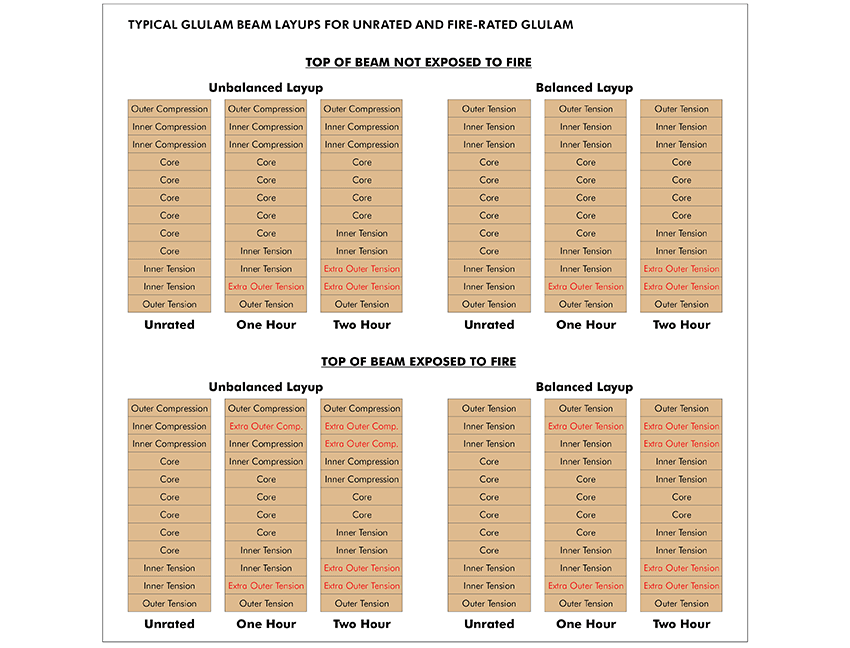Fire Phraseology FAQs: FRT versus Fire Rating
Fire resistant, fire retardant, fire rating: what’s the difference? Here’s a quick explanation of some commonly used fire safety terms and their implications for building construction.
Fireproof? Probably Not.
Because most inhabited buildings have flammable contents and furnishings, there’s no such thing as a truly “fireproof” building. If these contents catch fire, they can quickly generate enough smoke and heat to cause extensive damage.
While “fireproof” is probably not attainable, fire-resistant construction is well within reach. Extensive testing of building components and systems has resulted in approved fire-rated assemblies that retain the structural ability to contain a fire long enough for inhabitants to escape.
Fire-Resistance-Rated (Fire-Rated) Assemblies
A fire-resistance rating, often shortened to “fire rating,” measures the length of time that a structure can continue to perform its function when exposed to fire. The rating is determined through testing methods prescribed in the building code and is expressed as an “X”-hour fire-resistance-rated assembly.
For example, a UL-listed one-hour fire-rated floor assembly, properly built to specification, is generally expected to support its design load without collapsing or transmitting flame and high temperatures for at least one hour after a fire commences.
Some building products, such as glulam, may also carry a fire rating. But do not confuse fire rating with fire-retardant treatment (FRT); the two are in no way equivalent.
Fire-Retardant-Treated (FRT) Wood
Various wood products are available with fire-retardant treatments (FRT), which can be made when wood products are impregnated with chemicals by a pressure process or other means during manufacture. This treatment can reduce the surface-burning characteristics of the wood and resist the propagation of fire. However, this does not necessarily impact the fire rating of wood products.
False Equivalency: FRT ≠ Fire Rating
Fire-retardant treatment is primarily helpful for reducing surface flame spread. However, flame spread inhibition becomes irrelevant if the fire is very hot; FRT treatment does little to contain fire damages under these conditions.
Glulam and Fire
Glulam performs very well in the intense heat of a fire, where temperatures can reach 1,650 degrees Fahrenheit or higher. Unprotected steel members typically buckle and twist in such high temperatures, causing catastrophic collapses.
Wood typically chars at a rate of 1-1/2 inches per hour. Therefore, after a 30-minute fire exposure, only the outer 3/4 inch of glulam will have sustained fire damage. The char that develops also insulates the glulam. As such, when properly designed, large glulams can continue to support the load of the building when exposed to fire without fire-retardant treatment.
Depending on the severity of the fire and after a structural re-analysis by a qualified design professional, it is often possible to salvage the glulam members by merely removing the fire-damaged material and refinishing the surface of the member.
Fire-Rated Glulam

A structural member’s fire resistance is measured by the time it can support its design load during a fire. An exposed beam or column sized for a minimum one-hour fire resistance will support a design load for at least one hour during standard fire test conditions which simulate an actual fire. To qualify for a one-hour fire rating, a glulam will be manufactured differently. For a simply supported glulam beam with fire exposure from 3 sides (the top of the glulam is not exposed to fire), the core lamination should be replaced by additional tension lamination(s). See figure above. As with all other structural framing, specifications of one-hour fire-resistance-rated glulam should be checked by a professional designer to assure compliance with local codes.
Download Technical Note: Calculating Fire Resistance of Glulam Beams and Columns, Form Y245, for more detailed information.
Fire-Retardant-Treated Glulam
While APA doesn’t currently recommend FRT glulams, we understand there are some treaters producing this material. As treatment may cause checking or other impacts on the strength and stiffness of the glulam, designers should request a code report for approval.
“Fire-Rated Plywood” is NOT a Thing, but FRT Plywood is
Plywood is not a fire-rated product. If someone says “fire-rated plywood,” they are probably referring to fire-retardant-treated plywood, or FRT plywood.
When treated in accordance with AWPA Standard U1, FRT plywood qualifies for a lower flame spread index—at least as low as gypsum wallboard. Nonetheless, FRT plywood cannot be substituted for gypsum wallboard in listed fire-rated assemblies. Despite slowing the surface spread of the flame, fire-retardant treatment has little effect on the rate at which plywood will degrade through its thickness when subjected to an elevated heat source. Never substitute FRT materials for other materials with a similar flame spread index in a UL fire-rated assembly.
For more information on FRT plywood, including code references outlining where FRT may be used in lieu of noncombustible materials, such as exterior sheathing in Type III walls, download Technical Note: Fire-Retardant-Treated (FRT) Plywood, Form K320.
NEWLY UPDATED | Fire-Rated Systems
For more information and guidance on cost-effective, fire-rated construction systems that meet code and insurance recommendations, download APA’s recently revised, Fire-Rated Systems, Form W305.